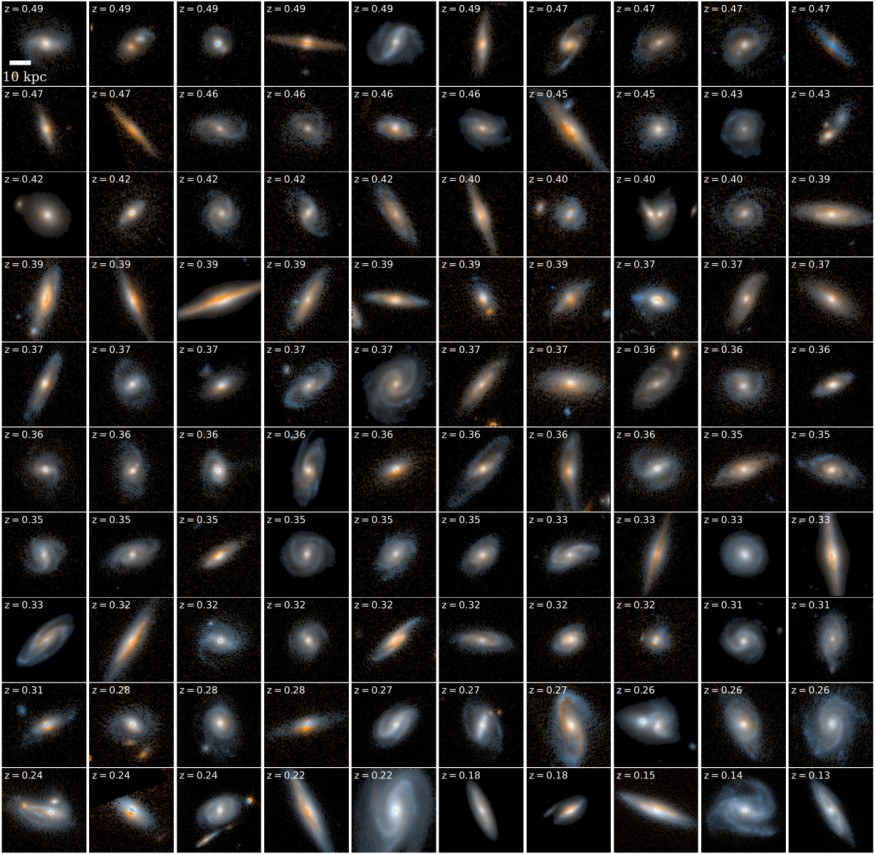An international team from various institutions presented the largest near-infrared image the Hubble Space Telescope captured. The first-ever map assembled by the team offers new insights regarding the galaxies that were constructed the earliest, as well as to chart the star-forming systems of the universe.
3D-DASH Survey by Hubble, Widest COSMOS Image

The high-resolution survey was dubbed 3D-DASH. It contains a wide portion of the space that might also hide several astronomical bodies we have not yet encountered. The comprehensive mapping will be analyzed further through follow-up observations that will be held with the help of Hubble's successor, the James Webb Space Telescope.
University of Toronto's Dunlap Institute for Astronomy & Astrophysics specialist and lead author of the study Lamiya Mowla explained in a press release that the Hubble telescope showed us the various changes in the galaxies and helped us understand how these shifts took place in the last 10 billion years of the universe since its launch 30 years ago.
The expert continued that the 3D-DASH program serves as Hubble's legacy that would continue our research regarding the mysteries of the galaxies far from our world.
The 3D-DASH is the first-ever study that completes a near-infrared survey of a region in space known as the COSMOS field. This place beyond the Milky Way had been observed throughout the history of astronomical studies and was recorded with large datasets by many research groups.

The 3D-DASH was captured with the biggest and longest wavelength ever through the Hubble instrument. This means that most of the features included in the image are impossible to see through the human eye, even with some of the advanced telescopes available today.
This large near-infrared image will be utilized by future studies related to discoveries and observations of unique cosmic objects and phenomena such as the colliding and merging galaxies, binary star systems, supermassive black holes, and untapped planetary neighborhoods that are more enormous than the Milky Way.
ALSO READ : Astronauts Acquire Mental, Emotional Health Problems During Space Missions Due to Lack of Gravity
Stitching Up Regions of the Universe
The patches of the entire COSMOS mapping were carried out through a method called Drift and Shift (DASH), which produces an image eight times larger than the resolution Hubble could process. The segments obtained through DASH were then stitched together to form a larger perspective, an approach similar to how panoramic view works in modern smartphones, reports EurekAlert.
DASH could also take shots eight times faster than one per orbit of the Hubble Space Telescope. With this speed, the team could get ahold of the entire data in just 250 hours instead of a whole 2,000 hours with the telescope alone.
The 3D-DASH collective covered approximately six times the size of the moon, as seen from ground observatories.
Enthusiasts and other students could experience how the 3D-DASH works through an online portal developed by Gabriel Brammer, co-author of the study and expert at the University of Copenhagen Niels Bohr Institute - Cosmic Dawn Center.
The pre-print of the research will be published in The Astrophysical Journal, titled "3D-DASH: The Widest Near-Infrared Hubble Space Telescope Survey."
RELATED ARTICLE : Mysterious 'Gruithuisen Domes' on the Moon Found to Be a Result of Volcanic Activity, Water
Check out more news and information on Space in Science Times.
© 2026 ScienceTimes.com All rights reserved. Do not reproduce without permission. The window to the world of Science Times.










